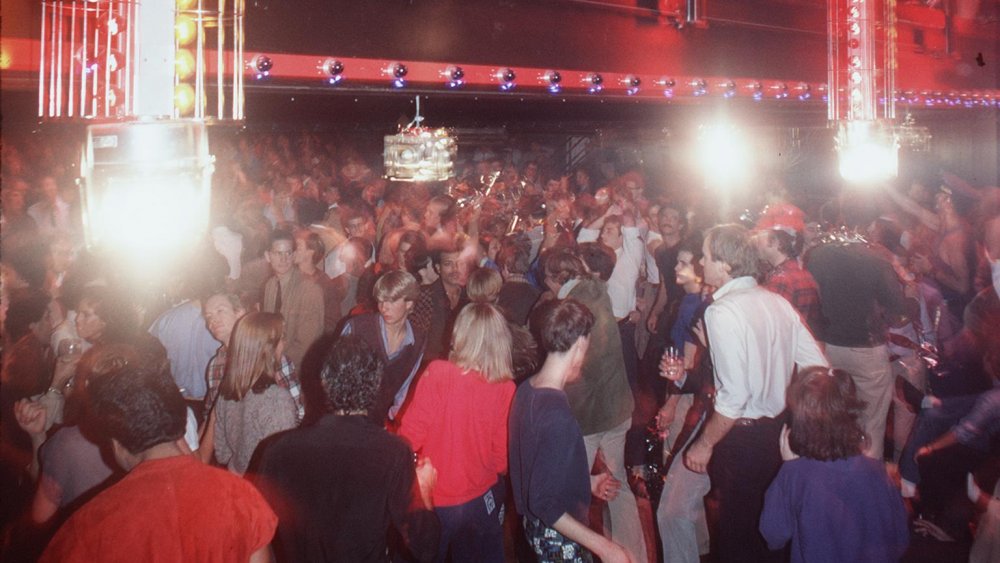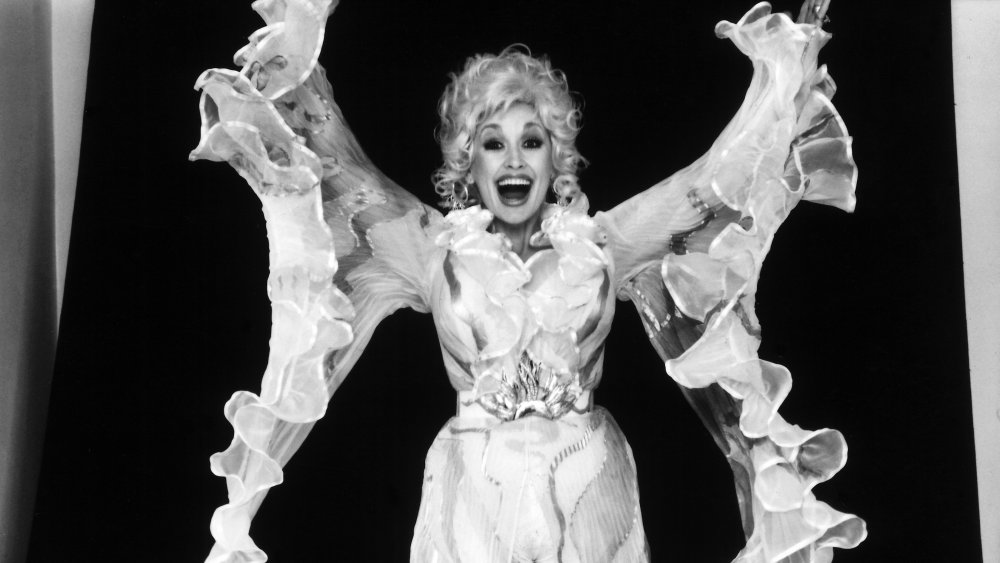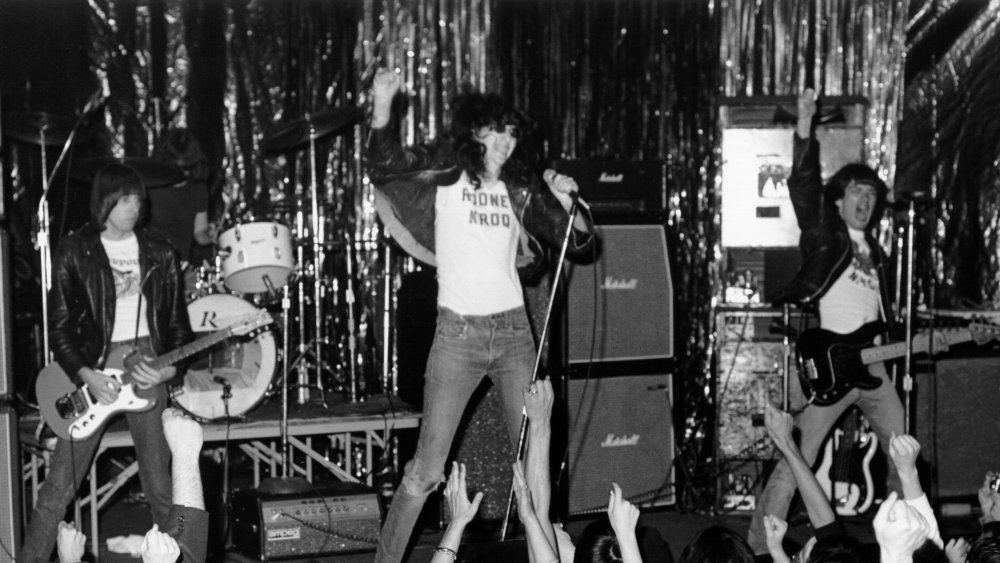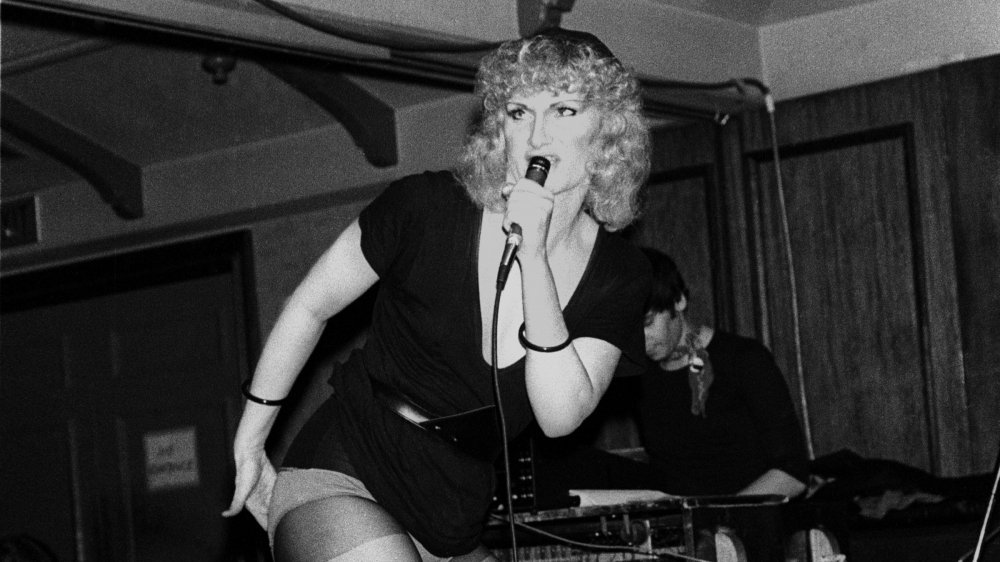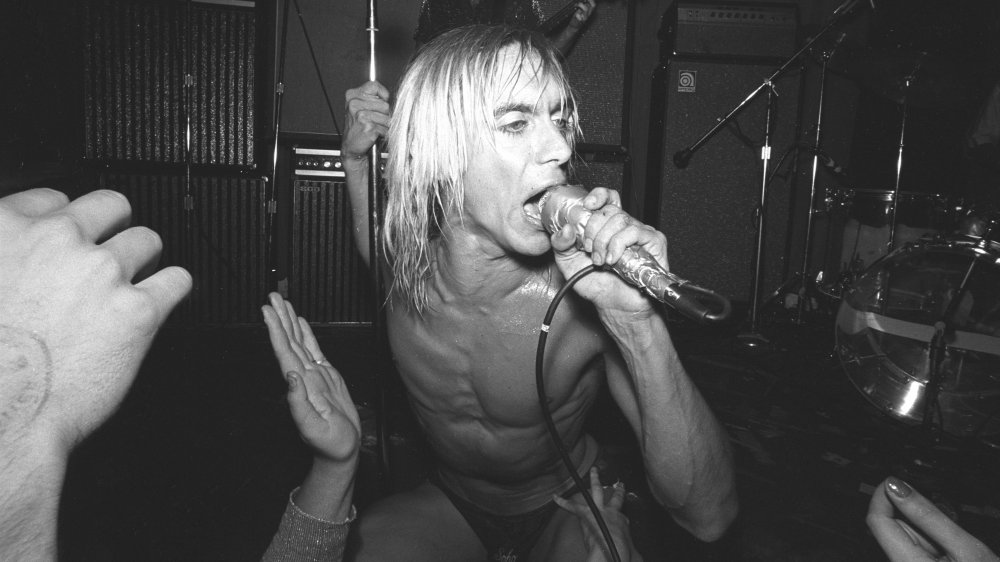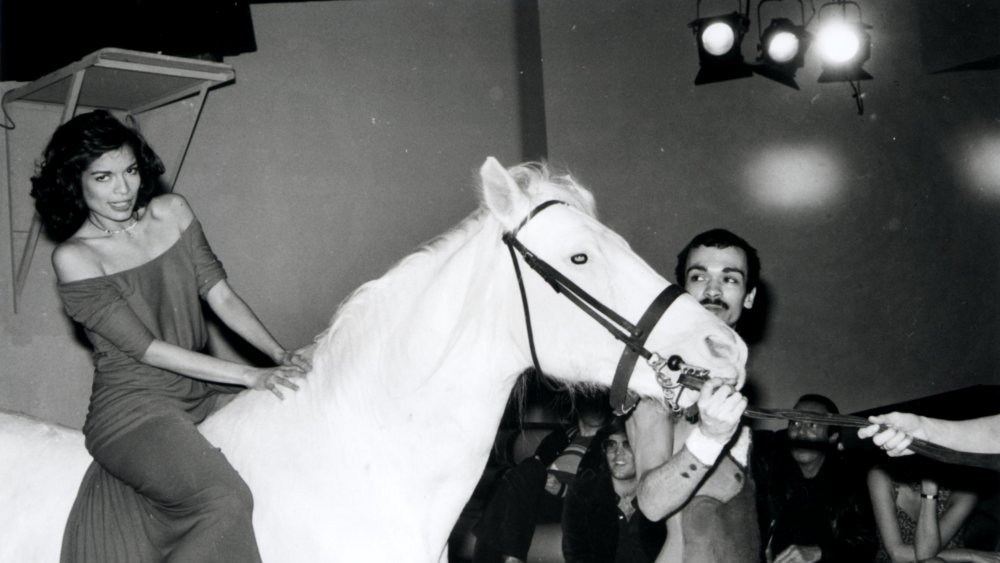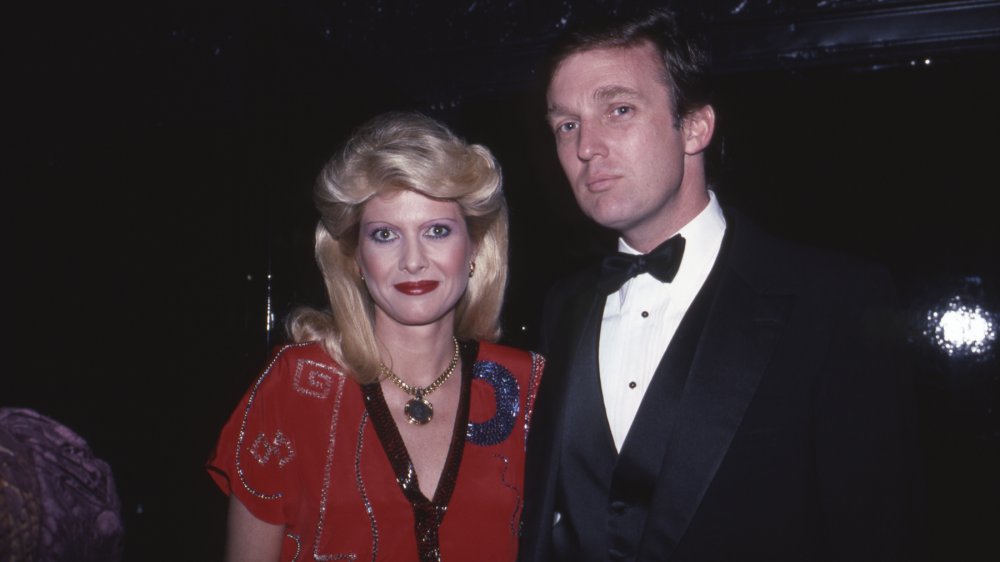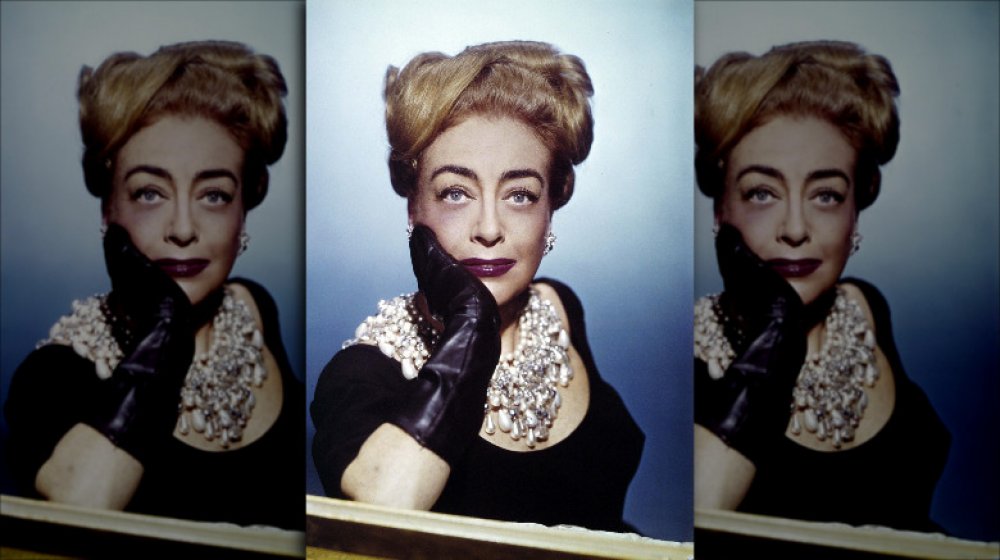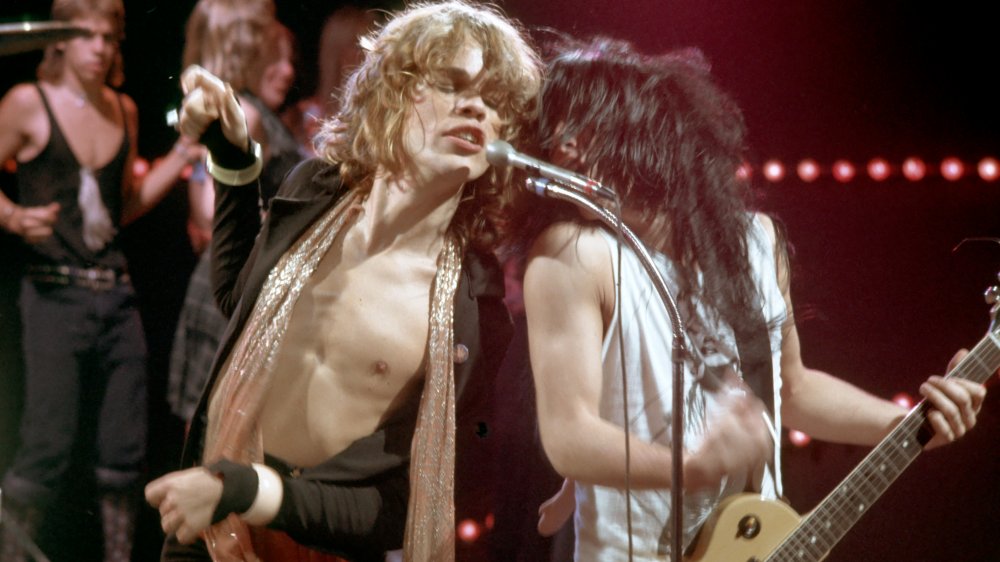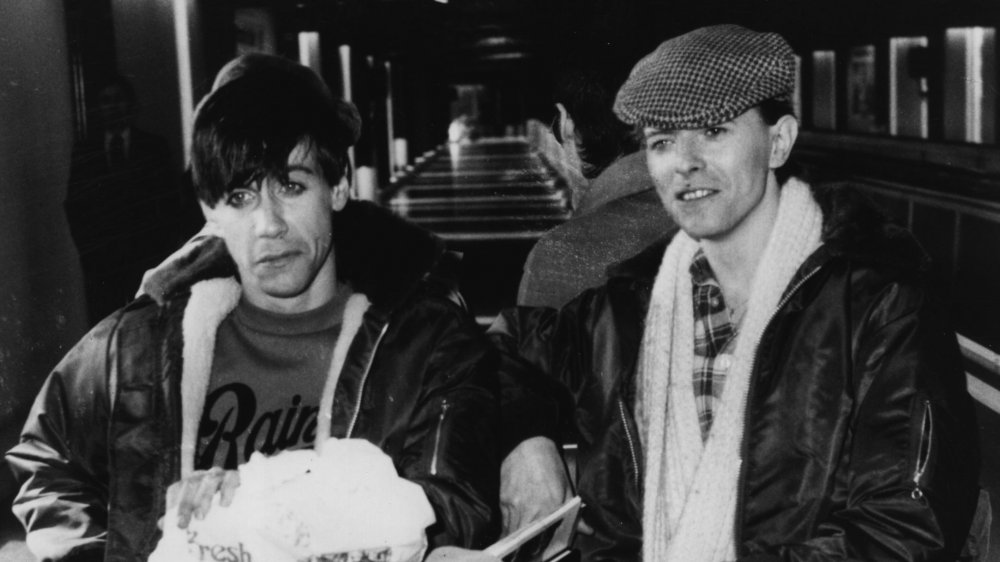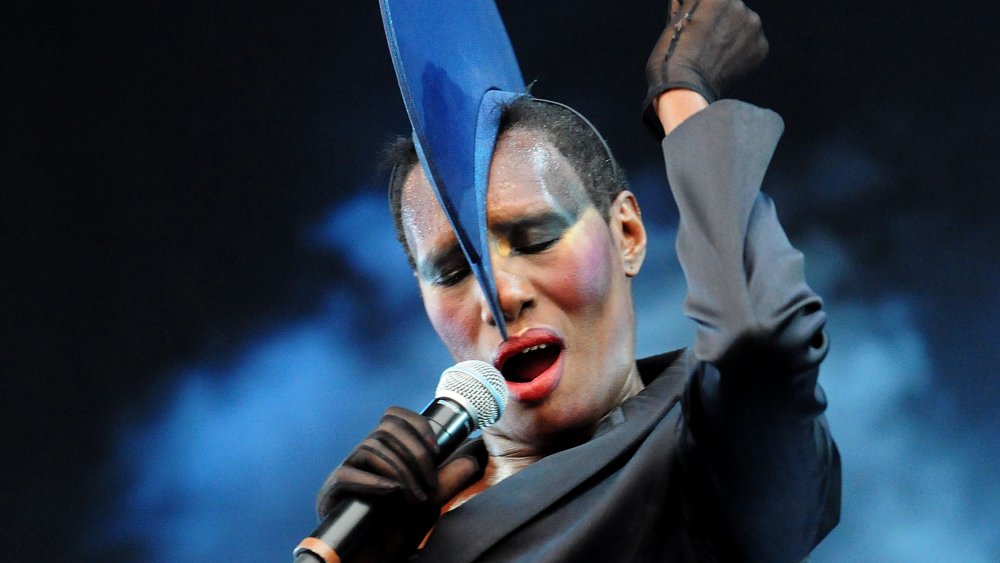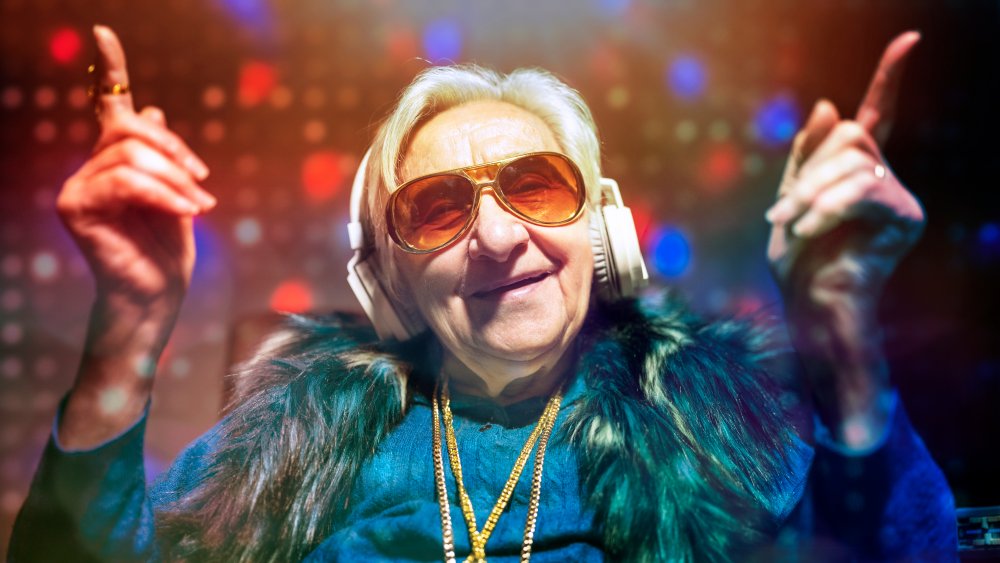The Wild History Of The 1970s Club Scene
We think we know what club life is all about: dropping beats, overpriced drinks, the politics of the VIP area. But today's nightclubs are the result of decades of corporate takeover — a good time, to be sure, but nothing like the wild, no-holds-barred scene you found in the 1970s, especially in New York City.
Spurred on the by the nascent LGBTQ rights movement, the club scene of 1970s New York had its roots in the 1960s, but the specific economics of the 1970s were the special sauce. Most big cities at the time had affordable downtown areas where artists and musicians could actually find apartments, and they congregated at the seedy bars and clubs that sprang up. The wealthier, straighter, and (let's face it) whiter folks from uptown wanted that energy, and so they would show up for the human scenery.
The end result was the unique chemistry of the classic 1970s club. Inclusion was key. Despite the iconic image of the velvet rope, clubs worked hard to get a diverse group of people inside. Celebrities mingled with the non-famous, and people of all genders, persuasions, and ethnicities danced the night away, usually under the influence of a lot of legal and illegal substances. It was one big party, and some crazy things happened before people began to realize how much money could be made. Here are some of the amazing moments from the wild history of the 1970s club scene.
That time Studio 54 built a farm for Dolly Parton
It's hard to believe Studio 54 actually existed. Founded by Steve Rubell and Ian Schrager, this cavernous club on 54th Street in Manhattan created the template of the modern club: the illusion of exclusivity, the glamour of celebrity, and an extremely permissive policy toward ... well, everything. The place was so successful that Rubell once bragged that he made more money than the Mafia, and according to The Washington Post, when the place was raided in 1978, the cops found garbage bags of cash in the basement.
Part of the club's success stemmed from luring celebrities there, sometimes with lavish parties thrown in their honor. In 1978, that's how they got country superstar Dolly Parton to show up. As author Anthony Haden-Guest writes, Schrager got the idea to actually build a farm on the dance floor, complete with live animals.
It worked: As Mixmag documents, Dolly showed up. But she was freaked out by the size of the crowd and the weirdness of the setup, and she reportedly sat by herself in one of the balconies and left early, which seems like the right reaction to walking into a club in the middle of Manhattan and finding a farm waiting for you.
That time the Ramones ripped through their entire set in 12 minutes
A club that defines one extreme of the 1970s New York club scene was CBGB. The club's name stands for Country, Bluegrass, and Blues, which is very early 1970s and also turned out to be wildly inaccurate, because CBGB became known as the epicenter of punk rock and new wave music in the 1970s.
CBGB is also known as the birthplace of legendary punk band the Ramones. As Ultimate Classic Rock writes, when the Ramones took the stage on August 16, 1974, CBGB had only existed for a short time and was just another dive bar in a sketchy neighborhood. The bar had established a reputation for letting raw, untested musicians book gigs, and it had a rule against cover songs. While that rule was devised to avoid paying fees to copyright holders, it also meant that a lot of experimental and interesting music graced the stage. Still, no one was expecting music history to be made that night.
Reportedly, the Ramones hit the stage and blasted through their entire set in 12 minutes flat. Most of their songs were less than two minutes long. Since they weren't allowed to do cover songs, the band solved the problem by ripping through the same set a second time. The band was a hit and played the club 70 more times in 1974 on their way to becoming legends.
That time Jayne County almost killed Handsome Dick Manitoba
If the names Jayne County (known at the time as Wayne County) and Handsome Dick Manitoba aren't familiar to you, you need to brush up on your 1970s music history. Manitoba is infamous as the former lead singer of classic punk band the Dictators, and County was the lead singer of Wayne County & the Electric Chairs, known for their wild, glam-punk style and County's crazy stage presence. As Hyperallergic notes, she later became punk rock's first openly transgender performer.
But back in the 1970s, she was still performing as Wayne County when she took the stage at CBGB with Manitoba in the audience, and as Rolling Stone reports, things didn't go well. Manitoba heckled County throughout the show, and County gave as good as she got. When (a decidedly not sober) Handsome Dick climbed onstage, County clobbered him with her mic stand — breaking his collarbone and nearly killing him. He threatened to sue.
The underground music scene in New York at the time was dealing with a growing homophobia problem, and the incident brought it out into the open. LGBTQ performers like County began to look for safer places to perform, creating a schism in the club scene. The good news? County and Manitoba later buried the hatchet and, according to amNewYork, have become good friends and even recorded music together.
That time Iggy Pop almost bled to death at Max's Kansas City
CBGB has become the iconic face of the underground music scene in 1970s New York, but it wasn't the only rock club in the city. In fact, Max's Kansas City was arguably just as important — if a bit less gross.
In 1973, Iggy Pop and the Stooges played at Max's. As Far Out Magazine recounts, Max's had a very small stage with tables right up against it. The Stooges were a big draw at the time, so the place was packed and Iggy Pop had grown frustrated with the tiny stage. So one night, the unpredictable performer decided to start walking out onto the tables as if they were an extension of the stage. That's a pretty baller move for a singer, and it was going great until one of the tables tipped over, sending Pop crashing down onto another table covered in glasses.
Pop came up bleeding. As Flashbak reports, he had a puncture wound in his chest and discovered that if he pulled his arm a certain way, blood would spurt out — so Pop started doing it on purpose, spraying his audience with his own blood, which seems like it might have been a health code violation. He kept singing through it all. The crew tried unsuccessfully to bandage him up with some gaffer tape, and Pop's blood-soaked performance became the stuff of legend.
That time Bianca Jagger rode around Studio 54 on a horse
Studio 54 is legendary today, a symbol of the excesses of 1970s club life. It has become shorthand for the endless party that supposedly defined the whole decade. The 1970s are often perceived as a wonderful time between the strife-filled 1960s and the stress-filled 1980s, and Studio 54 is the cocaine-fueled, disco-dancing icon representing it.
But as Vice notes, the nightclub almost failed completely. After a splashy and well-attended launch, attendance fell off immediately, and the club struggled to get enough people inside to make a profit. It was a huge space and needed about 1,000 people inside every single night — not just on the weekends — if it was going to make a dime. The owners did everything they could think of, but for the first five weeks or so, they barely got by.
Then fashion designer Halston booked the club to throw a birthday party for Bianca Jagger, Mick Jagger's wife. As Vanity Fair reports, this included having a naked man covered in gold glitter leading Jagger around on the back of a white horse. Photos of the event were instantly everywhere, and suddenly, it was the place to be, with crowds thronging outside. The moment saved Studio 54, and to this day, Jagger has to explain to people that she didn't ride through the streets of Manhattan on the horse — she and Mick just walked in like regular people. Well, regular mega-wealthy and famous people, but still.
That time a drug-fueled orgy spilled onto the street outside Studio 54
Today, every new club gets compared to Studio 54. It was an everything-goes nightclub where they literally had a giant mechanical moon lifting a spoon filled with cocaine to its nose as part of the decoration. It's hard to understand today just how unique the club was when it opened. While there had been dance clubs in New York and other cities for decades, Studio 54 was the first to truly combine a theatrical sense of "anything goes" with music, substances, and an elaborately designed space.
The official launch of the nightclub on April 26, 1977, was a glitzy affair. According to The Vintage News, celebrities from all walks of life were invited — including future president Donald Trump, who arrived with his first wife Ivana. Other icons of the 1970s soon arrived — Cher, Warren Beatty, Frank Sinatra, Margaux Hemingway, and many others.
As The Daily Beast reports, the real party soon erupted outside the club. An anonymous doctor had seen fit to bring a bottle of medical-grade quaaludes to the opening, and he began handing them out to everyone in the street. Before long, the celebrities dancing inside probably wished they were outside, where a full-on orgy had broken out, with people disrobing in the street and dancing wildly. Sadly, many of the people in that crowd probably don't remember much about the evening.
That time the Mudd Club hosted Joan Crawford Mother's Day parties
The Mudd Club was another iconic New York City nightspot in the 1970s. A small, dingy place, it boasted some of the most diverse crowds ever, with celebrities like David Bowie or Debbie Harry rubbing elbows with less famous folks to take in some legendary rock shows.
As The New York Times reports, one of the ways the Mudd Club set itself apart from other places was its willingness to book theme parties. Where other spots like CBGB concentrated on the raw power of new bands on the stage, the Mudd Club brought a bit of panache to its seedy nightlife. It attracted Andy Warhol, who abandoned Studio 54 in order to hang out there due to its unpredictable nature. Many of the party themes were in alarmingly bad taste, which was part of the fun.
As GrandLife reports, one of the most notorious theme parties thrown at the Mudd Club became an annual tradition: the Joan Crawford Mother's Day costume party. Everyone showed up dressed as either the famous actress — or as her famously abused daughter, complete with bandages and slings. That's the sort of wild night that simply wouldn't fly in today's less amused culture, but it was a common occurrence in the place where Fab 5 Freddy reportedly taught Debbie Harry how to rap.
That time the Mercer Arts Center collapsed
The Mercer Arts Center is largely forgotten today, but as Den of Geek recalls, for a few years in the early 1970s, it was one of the most important music venues in New York City. It's most closely associated with the New York Dolls, the incredibly influential proto-punk band (and the starting point for singer David Johansen, aka Buster Poindexter of "Hot Hot Hot" fame).
As Vulture reports, on the evening of August 3, 1973, the Center was preparing to welcome about 2,000 eager audience members when the building began showing signs of imminent collapse — bricks literally falling and wooden beams groaning under sudden stress. At around 5:00 PM, just before people were due to arrive, the building collapsed into a heap of rubble, killing four. A fictionalized version of the moment kicked off HBO's short-lived series Vinyl and implied it was the sheer rock 'n' roll power of the New York Dolls that brought the walls down, which is just silly. Cool, but silly.
The collapse shouldn't have been a surprise: The building had been showing signs of problems for years, exacerbated by some sketchy and probably illegal renovations done in the 1960s that weakened the structure. Today, you can still see the original roof line of the Center on the brick of the building next door.
That time David Mancuso turned rent parties into legend
If you want to trace the evolution of the 1970s New York club scene, you have to go back to the very beginning of the decade. To February 14, 1970, to be exact.
As noted by NPR, that was the day that a young guy named David Mancuso realized he needed money for the rent on his loft apartment at 647 Broadway. To cover the bills, the record collector and audiophile decided to try an age-old technique: the rent party. He assembled a diverse cross-section of Manhattan natives, provided music and a dance floor, and charged a modest entry fee. Mancuso delved into his huge stack of albums and played DJ, insisting that all records be played in their entirety — no beat-matching or cross-fades as most DJs liked to do.
The LGBTQ community at the time had few safe spaces to dance and enjoy themselves, so the Loft, as it became known, was immediately popular. Mancuso's parties were underground but perfectly legal and established the hunger for a nightlife marked by a casual attitude, an inclusive vibe, and plenty of great music. These parties incubated the club culture that erupted into vibrant life later in the decade when splashier, more formal dance clubs opened up.
That time David Bowie, Iggy Pop, and Lou Reed had nothing to say
It's always fun to imagine what it must be like when a bunch of famous, creative people get together, have a few drinks, and hang out. Who wouldn't have wanted to be a fly on the wall when people like David Bowie, Lou Reed, and Iggy Pop hung out at a legendary New York club like Max's Kansas City? The conversation must have been amazing.
Except it wasn't.
The New Yorker notes that Pop was introduced to Bowie at Max's in 1971. Bowie had expressed interest in meeting the punk rocker, and Pop had to be woken up and brought to the club. But the meeting of three music icons wasn't the sort of amazing celebrity hangout you might imagine. As the official Max's Kansas City website confirms, in Bowie's own words, the three men experienced the sort of awkward evening we've all suffered through at one time or another: "Me, Iggy and Lou Reed at one table with absolutely nothing to say to each other, just looking at each other's eye makeup."
It's almost comforting to think that super-famous people find themselves at a loss for small talk just like the rest of us. Things got better: As Far Out Magazine reports, Bowie became good friends with both Pop and Reed and worked with both of them many times.
That time Grace Jones had a cake orgy with Divine
Xenon doesn't get as much attention as Studio 54, in part because it was designed to be a near-carbon-copy of the concept. (They weren't even trying to hide it: The element xenon's atomic number is 54.) But just because it wasn't terribly original doesn't mean some crazy stuff didn't happen there.
Take the time in 1978 when actress and singer Grace Jones threw herself a 30th birthday party there. Jones rode in on a motorcycle (as one does). Vintage Everyday reports that she posed with the bike on the dance floor and was soon surrounded by half-naked dancers who crowded around her — along with Divine, one of the most famous drag queens of all time.
The birthday cake arrived, and what can only be described as a cake orgy of sorts broke out, with everyone grabbing a piece and feeding each other. Jones and Divine both fed each other a piece, and the most remarkable thing about the whole moment is that it was captured on film. Looking at the photos, it's clear that everyone was having a grand time, but for Jones, there was always an element of performance. She's quoted as saying that "it required [...] a lot of hard work and good make-up to be accepted as a freak."
Any time Disco Sally showed up at Studio 54
One thing that made the 1970s club scene special was the sense of inclusiveness. Despite the velvet ropes and the long lines, the clubs always strove to bring different people together. That was part of the fun: the idea that people from all walks of life would be hanging out, sharing an experience.
Nothing underscored the fun, anything-could-happen vibe of those times like Sally Lippman. According to The Washington Post, Lippman was 77 years old when Studio 54 opened. She was a lawyer by trade but hadn't practiced in decades, and she found a bit of celebrity and whole lot of joy when a young friend brought her to the club. She became a sensation as she danced wildly with men and women decades younger than herself, earning the nickname Disco Sally.
As Vintage News Daily reports, Sally wasn't a figure of fun — she was a beloved regular who often invited the staff back to her apartment for dinner. She truly loved the freedom that the 1970s club scene offered. As former Studio 54 manager Scott Bitterman said, "Sally represented the best of the club for me: she was neither rich nor famous. She was a woman who loved to dance and have fun with her friends in the evening."
